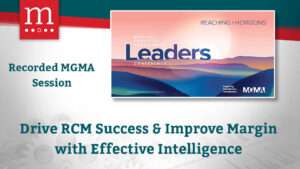
2022 MGMA DX Leaders Conference Session: Drive RCM Success & Improve Margin with Effective Intelligence
Watch the recorded session. Drive RCM Success & Improve Margin with Effective Intelligence. Will Mowe at Rebound Orthopedic & Matt Seefeld
 Matt Seefeld, Executive Vice President at MedEvolve, brings over 24 years of management consulting experience in the healthcare industry. He has extensive expertise in the assessment, design and implementation of process improvement programs and technology development across the entire revenue cycle. Matt began his career with Stockamp & Associates, Inc. and worked for both PricewaterhouseCoopers LLP and Deloitte Consulting LLP in their healthcare and life sciences practice lines. In 2007, he developed a business intelligence solution and founded Interpoint Partners, LLC, where he served as Chairman and Chief Executive Officer. In 2011, he sold his business to Streamline Health Solutions where he then served as Chief Strategist of Revenue Cycle followed by Senior Vice President of Solutions Strategy until 2014. Matt ran global sales for NantHealth and provided consulting services for healthcare technology and service businesses nationwide, prior to joining MedEvolve full-time.
Matt Seefeld, Executive Vice President at MedEvolve, brings over 24 years of management consulting experience in the healthcare industry. He has extensive expertise in the assessment, design and implementation of process improvement programs and technology development across the entire revenue cycle. Matt began his career with Stockamp & Associates, Inc. and worked for both PricewaterhouseCoopers LLP and Deloitte Consulting LLP in their healthcare and life sciences practice lines. In 2007, he developed a business intelligence solution and founded Interpoint Partners, LLC, where he served as Chairman and Chief Executive Officer. In 2011, he sold his business to Streamline Health Solutions where he then served as Chief Strategist of Revenue Cycle followed by Senior Vice President of Solutions Strategy until 2014. Matt ran global sales for NantHealth and provided consulting services for healthcare technology and service businesses nationwide, prior to joining MedEvolve full-time.

Watch the recorded session. Drive RCM Success & Improve Margin with Effective Intelligence. Will Mowe at Rebound Orthopedic & Matt Seefeld
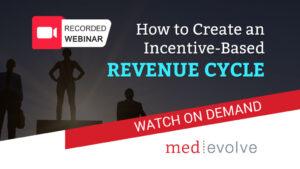
MedEvolve Effective Intelligence web-based technology gives you the data point neccessary to objectively evaluate your RCM staff. Watch on demand.
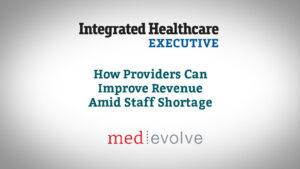
Matt Seefeld explains that measuring staff effectiveness & optimizing data and workflows will allow provider organizations to thrive despite the shortage.
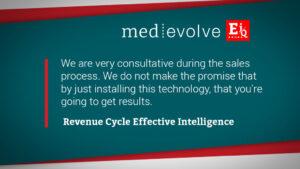
Being a vendor can be very frustrating too. For example, when we go in and sell, it’s a very consultative sale. We do not make the promise that by just installing this technology, that you’re going to get results. You have to be willing to look at guess what people in process and how that aligns with the technology I’m selling you to get the result.
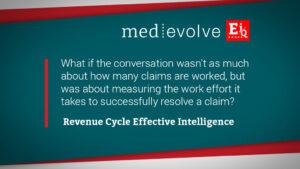
Measuring number of claims worked or measuring work effort & successful outcomes? What should healthcare executives focus on with RCM labor?
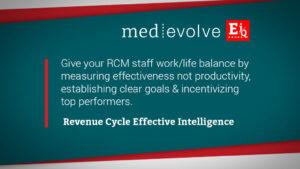
Give your RCM staff work/life balance by measuring effectiveness not productivity, establishing clear goals & incentivizing top performers, and tie it to a reward system that creates the recognition that this new generation of the workforce needs to have.
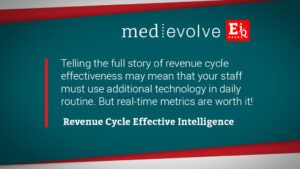
Telling the full story of revenue cycle effectiveness may mean that your staff must use more technology in their daily routines. But taking the extra steps to record tasks & outcomes with Effective Intelligence can achieve ROI within 60 days.
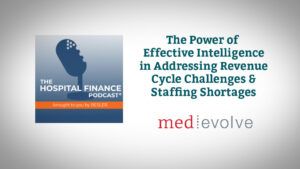
There is a misnomer that people, process, and technology are independent of each other. I often go to trade shows where vendors have great technology. They’re promising big results. But the provider organization doesn’t understand that they will likely have to make material changes to adopt that technology to get the results that are being promised.
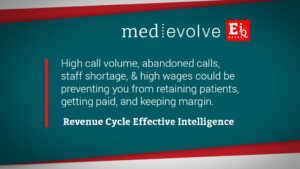
High call volume, abandoned calls, staff shortage, & high wages could be preventing you from retaining patients, getting paid, keeping margin. Here are some points to consider when choosing a call center vendor.
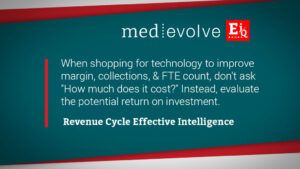
When healthcare executives are shopping for technology to improve margin & collections, and reduce staff, don’t ask “How much does it cost?” Instead, evaluate the potential return on investment.
Reduce RCM labor dependency with workflow automation, task management, & real-time analytics to increase margin.
Outsource your medical billing to us with over 20 years of revenue cycle experience incorporating Effective Intelligence in house.
Improve patient collection rates with account resolution services: call center, mobile engagement, payment portal & counseling.
Increase productivity and visibility into front & back office processes while keeping your staff focused.
Matt delves into profitability & accountability challenges facing healthcare, like lack of real-time data and task tracking.
Brad Hunter, talks with EVP & Chief Commercial Officer at MedEvolve, Inc. and Founder of myLifeLink, Matt Seefeld.
Compass Health added award winning RCM automation & intelligence to Veradigm EHR/PM system and reduced denials, AR days, and labor dependence.
Monday – Friday
7:00 am – 7:00pm
1115 West 3rd Street
Little Rock, AR 72201
Privacy Policy | 2024 All Rights Reserved